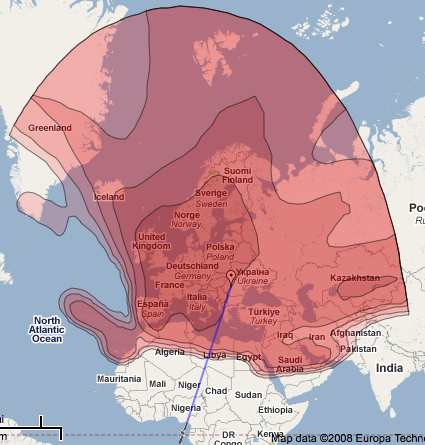- OneGeology: One obvious map for an Earth atlas to show is the planet’s geology. Enter OneGeology:
OneGeology is an international initiative of the geological surveys of the world and a flagship project of the ‘International Year of Planet Earth’. Its aim is to create dynamic geological map data of the world available via the web.
The result so far is a dynamic map accessible via the OneGeology Portal which unfortunately I could not visit as the only supported browsers are IE6, IE7 and Firefox 2. I run Firefox 3. But Italian GIS blog Tanto, via which I heard about OneGeology, has a promising screenshot of the growing map. Fodder for Google eventually? Not sure what ads could be placed against a geology layer — pet rocks? :-)
- How WorldWide Telescope works: Jon Udell has a fantastic two-part series on the making of Microsoft WorldWide telescope, interviewing developers Curtis Wong and Roy Gould in part 1, and Jonathan Fay in part 2. In this second part, we hear all about TOAST, “tesselated octahedral adaptive subdivision transform”, a projection system they developed for spherical models that does not fail at the poles (unlike Google Sky). The whole series is deliciously detailed in a geeky way. (Via Jon Udell)
- Social satellite coverage maps: Alexander from SatBeams writes:
I have recently started a new website – SatBeams. The site allows to view the Satellite Coverage maps for most of the satellites all over the globe in Google Maps format. At the same time it is possible to place markers on the map stating which frequencies/channels one can receive at the specific location and view what others can receive from the selected satellite in different places of the world.
The coverage maps are very pretty indeed:

- HeyWhatsThat goes mobile: geoprogramming tour de force HeyWhatsThat is now available on GPS-enabled mobiles, including the iPhone, Blackberry and Nokia as part of the Where GPS widget collection and also for Android. Want to know what those peaks on the horizon are while you’re on your trek? HeyWhatsThat will tell you… as long as you’re within cellphone range, of course. Interesting datapoint regarding the iPhone’s popularity, courtesy of a news email from HeyWhatsThat founder Michael Kosowksy:
Computation requests [for your view] are put in a queue, and because of iPhone-related demand, for the last few days the “two minute” calculation estimate has been as high as fifteen minutes. (If it goes above fifteen minutes, we just ask you to try again later.) But please note that once you start a computation you don’t have to wait for it to finish; you can leave the screen and simply come back later via the menu entry “Show me a view I’ve requested before.”
- More of Sweden in 3D: Stockholm went 3D in the browser on Hitta.se in May (blogged here) — now it’s the turn of Göteborg, Linköping and Malmö. (Possible problems in Firefox 3, works in Safari on Mac) (Via NyTeknik)
- Nostalgia trip: Just in case you read Swedish, Dagens Nyheter has an article about how an Iranian refugee in Sweden who was forced to leave his country in 1983, can now, 25 years later, visit his ancestral village of Kalajah virtually via Google Earth. Once again a newspaper fails to do the obvious and embed a dynamic map of the place, so here you go:
Gives a new poignant meaning to “looking for one’s house”.
- “Clickable” DVDs: When it comes to aid workers working in low-bandwidth countries, instead of “clickable countries” Richard Treves suggests putting all the required data into regions-based KML sticking it on a DVD. One downside of this: Information on the DVD is static, though you can completely eschew the need for an internet connection.
- Google Earth tutorial: Also from Richard Treves: Producing Maps with Google Earth, a new web tutorial for Google Earth that he’s made for the University of Southampton’s School of Geography.
- Highlands in 3D: Paul Webster from WalkHighlands.co.uk writes:
We’ve been integrating walkhighlands.co.uk website more completely with the Earth plugin/API. You can now open the 3D Highlands above the current walk from any of our walking route descriptions. And you can open the first person view from any of our pages on the mountain summits (known as Munros in Scotland) e.g. from www.walkhighlands.co.uk/munros/sgurr-nan-gillean . At any point using the plugin you can now switch between first person mode and controls so you can walk and look around about in the virtual landscape, and an overhead view with the standard controls.